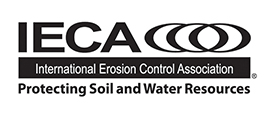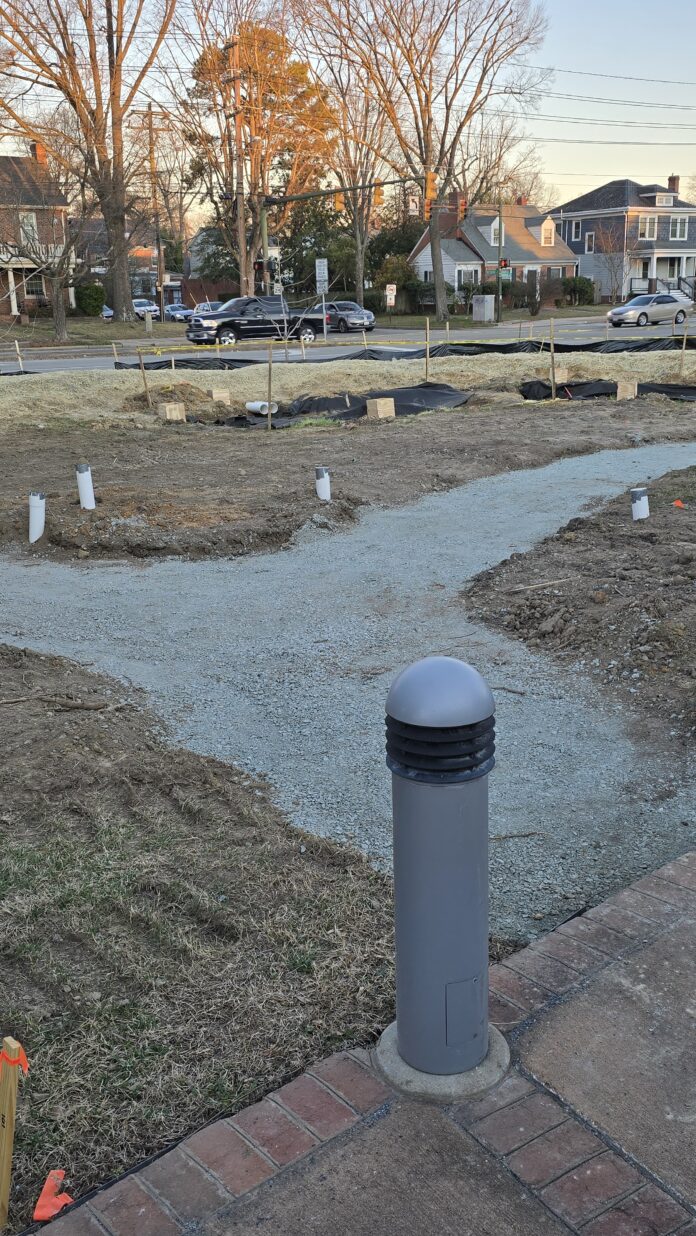From Compliance to Long-Term Impact
Once construction activities conclude, the crews drive away, and engineers sign their final documents. However, for Municipal Separate Storm Sewer Systems (MS4s), the work is far from over. A newly developed site is more than a collection of buildings and pavement; it’s a reshaped hydrologic system. Replacing lawns, meadows, urban forests and vacant land with buildings, airports, parking lots and other forms of impervious surface comes at a cost to water quality, flood management and municipal budgets. These changes in how water naturally moves increase the volume (amount) and velocity (speed) of stormwater runoff, leading to stream bank erosion, sedimentation and waterbody impairment.
MS4 operators, such as cities, military bases or universities, are required to manage these impacts. MS4s fall under Environmental Protection Agency (EPA) and state regulations, with compliance regulations varying based on location and population size. MS4 stormwater regulations come in three phases:
- Phase 1. Large cities and districts
- Phase 2. Smaller municipalities
- Phase 3. Niche sites (military installations and universities).
MS4 operators are charged with tracking and monitoring infrastructure, inspecting sites for compliance, educating the public developing stormwater pollution controls, while balancing citizen concerns, local politics, economic development and integration of new regulations.
Post-construction stormwater controls are now a standard requirement under the EPA’s MS4 permit framework. As nationwide concerns over urbanization’s impact on water quality and flooding became a high-priority talking point for many communities, the EPA was prompted to establish more secure stormwater management standards. As one of the newer elements of stormwater management, MS4s face a familiar rite of passage: designing, implementing and maintaining an unfunded mandate that only a few years ago did not exist.
This article examines what happens after the initial MS4 rollout. As early implementation efforts move past short-term construction oversight to long-term stewardship of stormwater, infrastructure and compliance, MS4s are grappling with four common challenges: limited staff, unclear enforcement mechanisms, a lack of tracking assets and a lack of best management practices (BMPs). But with every challenge comes an opportunity to enact policies and procedures aimed at sustainable resilience.
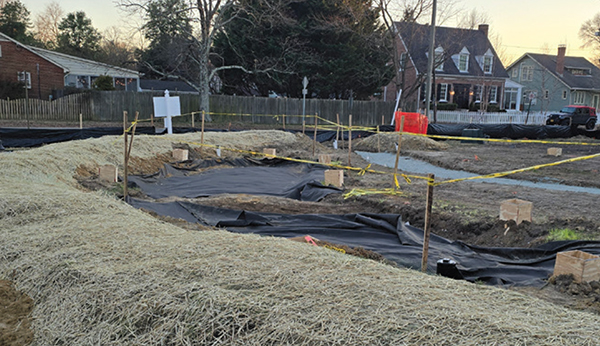
Post-Construction Requirements
Under the EPA’s National Pollutant Discharge Elimination System (NPDES) program, MS4 operators are mandated to develop, implement and enforce a post-construction program aimed at reducing pollutants from new development and redevelopment projects that disturb one or more acres (4,046 or more square meters) of land.
Each program must include:
- A combination of structural and/or non-structural BMPs
- Regulatory mechanisms, such as ordinances, to require implementation
- Provisions for long-term operation and maintenance
- Defined measurable goals to evaluate program effectiveness¹
Each goal must be:
- Tailored for the local environment and community
- Supported by metrics that can demonstrate pollutant reduction, runoff mitigation and BMP maintenance compliance
- Integrate regional regulations, such as green infrastructure, low-impact development and off-site mitigation, and market-based mechanisms
Figures 1 and 2 are different perspectives of a small local library retrofitting its front lawn to integrate green stormwater infrastructure that is functional, aesthetically mindful and inviting to the local community. The mini retention pond works as a Post-Construction BMP and a children-sized amphitheater for outdoor read-alongs.
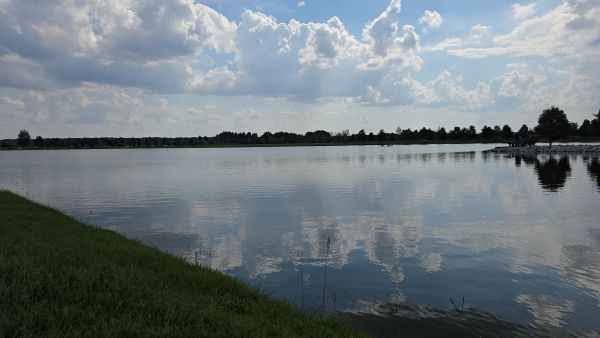
Three Challenges After Implementation
- Permit and Ordinance Language
While federal and state permits aim to provide flexibility in implementation for communities, many stop short of defining how reductions in stormwater pollutants should be operationalized. Without clear definitions of what qualifies as “long-term maintenance” or supplying performance standards for Maximum Extent Practicable (MEP) of controls, interpretations and standards of implementation vary widely.²
Local programs administered without enforceable ordinances or clear legal agreements result in voluntary compliance, as there is no clear mechanism to compel owners to maintain stormwater systems. Often, MS4s discover this issue only after a major disturbance or repeated complaints surface.³ - Lack of Stormwater Asset Management
While wastewater and drinking water systems have standardized structural assets (pipes, valves, pumps, etc.) and are primarily owned by the MS4, stormwater systems differ. Stormwater systems are often decentralized, privately owned and/or poorly mapped. Older asset management systems were not designed to account for the diversity of stormwater infrastructure, from proprietary devices to green infrastructure. The lack of asset management systems and accurate inventories hinders tracking, monitoring and performance reporting for MS4 post-construction programs.⁴
Stormwater assets could include storm inlets, an engineered culvert, the neighborhood ditch or a large recreational area (Figure 3). The City of Memphis maintains and manages Shelby Farms, which is home to a herd of buffalo, a community garden, hiking trails and a large detention pond used for water storage, kayaking and other recreational activities. - Staffing and Capacity Constraints
Many MS4s implemented MS4 post-construction programs without acquiring additional staff, budget or training. Field crews already assigned to street maintenance, industrial inspections or code enforcement might deprioritize an MS4 post-construction program that lacks leadership support and direction.
In the absence of clear Standard Operating Procedures (SOPs) and role clarity, inspections may be infrequent, seasonal or partial programs directed primarily at new development, excluding existing BMPs.
Enforcement of MS4 post-construction requirements depends not only on authority but also on technical competency. Without adequate training on approved stormwater control measures, inspection protocols and maintenance standards, field crews may overlook issues or delay enforcement. In these cases, regulations risk becoming symbolic rather than actionable⁵
Three Opportunities for MS4 Program Maturity
- Codify Maintenance Obligations
Operation and maintenance agreements, paired with site-specific maintenance plans tailored to each installed BMP, provide clarity for property owners and strengthen accountability. Long-term enforceability is achieved when MS4s require these agreements and plans to be recorded with property deeds, which ensures that maintenance responsibilities transfer with the parcel regardless of ownership changes.⁶ - GIS and Digital Asset Management Programs
The range of available asset management technologies has grown significantly, which gives MS4s of all sizes affordable and scalable options for monitoring and maintaining stormwater infrastructure. Today’s GIS-based systems integrate critical data elements such as inspection history, risk tiering, maintenance logs, site photos and public records into centralized, user-friendly platforms.⁷
These tools reduce onboarding time, simplify training through standardized templates and provide clearer oversight. With better visibility, MS4s can shift from a reactive posture to a proactive, risk-based management approach, identifying potential issues early, prioritizing resources and forecasting long-term maintenance costs.8 - Scalable SOPs and Frameworks
SOPs and structured decision frameworks are essential for building consistency across MS4 post-construction programs. They establish clear, repeatable steps for inspections, documentation and enforcement, which creates alignment across departments and ensures that key tasks aren’t dependent on individual staff knowledge or memory.
While developing robust, field-ready SOPs requires significant upfront effort, it ultimately reduces confusion and increases efficiency. MS4s aiming to strengthen their programs should consider SOPs not only for routine inspections and maintenance but also for specific scenarios such as BMP failures, interdepartmental coordination and escalation protocols.
Launch to Sustainable
MS4 programs were established over 30 years ago, while post-construction mandates were introduced to NPDES permits in the late 2010s. While the post-construction programs are no longer in their infancy, they have not reached their final form. As MS4 operators move beyond the initial phase, they face complex questions around legal authority, programmatic consistency, inspection capacity and long-term asset stewardship. These challenges, though significant, present a powerful opportunity to strengthen MS4 post-construction programs into a growing, adaptive system. Success in a post-construction stormwater management program is measured by how well those systems function over time and how effectively communities are protected in the process.
About the Expert
• Amesha Morris, MS, CFM, CPESC, is a stormwater professional and certified instructional designer with 15 years of experience across municipal, construction and industrial sectors. Morris creates practical, field-tested training programs that help organizations translate complex regulations into sustainable daily practices.
References
1. Environmental Protection Agency, United States. April 2010. Small MS4 Permit Improvement Guide. EPA-833-R-10-001.
2. National Association of Clean Water Agencies. 2018. MS4 Stormwater Permitting Guide.
3. Center for Watershed Protection. 2013. Developing a Long-Term Stormwater BMP Maintenance Program.
4. Tetra Tech. 2020. Post-Construction BMP Tracking and Program Evaluation. Environmental Protection Agency, United States.
5. Center for Watershed Protection. 2007. Making Urban BMPs Work: Lessons from the Field.
6. Washington State Department of Ecology, United States. 2019. Eastern WA Phase II Municipal Stormwater Permit.
7. Environmental Protection Agency, United States. 2014. Retrofitting Urban Areas with Green Infrastructure.
8. Environmental Protection Agency, United States. January 2018. Overcoming Barriers to Development and Implementation of Asset Management Plans.

